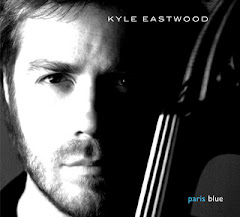I'm still working on the listening guides in Jazz Styles, a book that (except for the listening guides) I just finished reading recently. I've also added a bunch of interesting chunks of musical history to my collection, that I thought I would brag, er, write about.
 |
| I like the early pictures of Duke, because he doesn't show all the weariness of 50 years in the music business that his later pictures do. Just a happy, confident musician. |
The top of that heap is the 3 CD set of Early Ellington: The Original Decca Recordings. This is an increasingly rare set that could be had on Amazon and E-bay forever, but almost always at ridiculous prices. So, when I happened to be surfing around and found one for less than $20, I was all over it. I really consider it a cornerstone of my collection, even though I've only had it for a few days. Of course, Mrs. S put it on for me the other night as our dinner background music, and she quickly thanked me when I walked right over to the iPad and put something else on. "I thought you wanted to listen to it," she said. I told her simply, that's music to study while listening to it, not to eat dinner. She said, "Well, thank God." Which is not to say there's anything wrong with the music, just, it's old, and it really takes a lot of focus and energy for a person living in the 21st century to listen to.
 |
| A subdued and simple piece of cover art, oddly compelling, that requires a second look, and then a third, just like Haig's music. |
Next is Al Haig's Will-O-The-Wisp, a collection of four ten-inch LP's from the '50's. This can actually be played during dinner to no great detriment, but it too is music I bought to study. I didn't know it, but Al Haig really is the grandfather of post-bop piano (Bud Powell fans: please give me a break on that one), and because of his work with the bop masters, he really laid the groundwork for a lot of the great pianists that were to come, like McCoy Tyner, Bill Evans, Ramsey Lewis, Ahmad Jamal and others. I find Haig's simple statements quite attractive because they are approachable to untalented players of little skill, like myself, making a decent sound not only attainable, but manageable.
 |
| How do you take a tax-deductible trip to France: Record your latest CD while you're there! |
Then, speaking of Ahmad Jamal and getting some music we could listen to, we picked up the latest by "armadillo", as he's known in our house. ("Ahmad Jamal" in spoken Japanese sounds remarkably like "armadillo".) As I've indicated in my side bar: "It’s scary to think that Ahmad Jamal has been playing jazz
piano for something like 20 years longer than I’ve even been alive. Maybe
that’s why he sounds as good as he does. His original compositions also have a
way of sneaking into your head for long periods of time, which means the best
solution is to just put him on the iPad and leave him on." His music is just a joy.
Ah, it feels good to write about music again. I must do more of this in the very near future.







